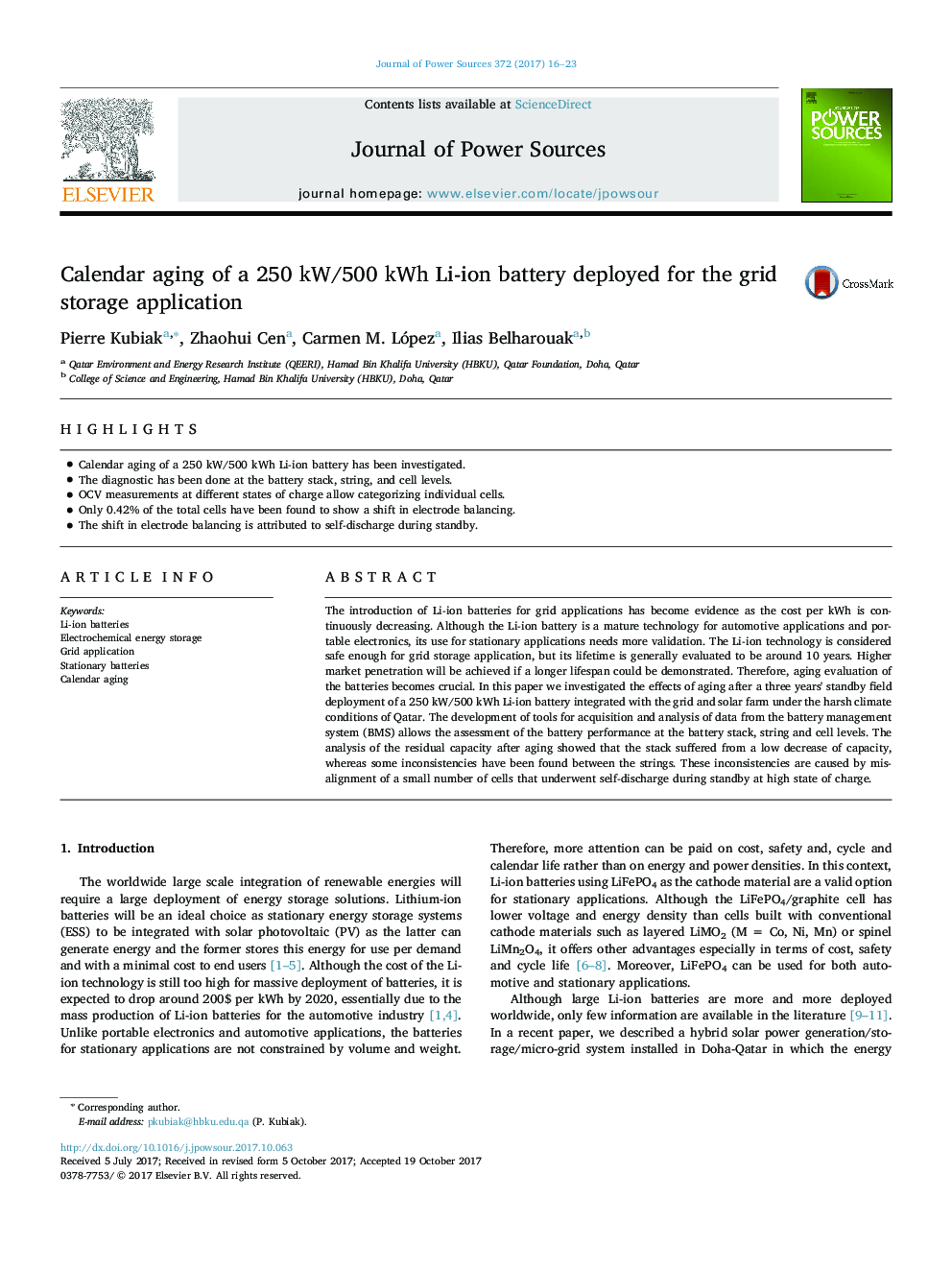| Article ID | Journal | Published Year | Pages | File Type |
|---|---|---|---|---|
| 7726447 | Journal of Power Sources | 2017 | 8 Pages |
Abstract
The introduction of Li-ion batteries for grid applications has become evidence as the cost per kWh is continuously decreasing. Although the Li-ion battery is a mature technology for automotive applications and portable electronics, its use for stationary applications needs more validation. The Li-ion technology is considered safe enough for grid storage application, but its lifetime is generally evaluated to be around 10 years. Higher market penetration will be achieved if a longer lifespan could be demonstrated. Therefore, aging evaluation of the batteries becomes crucial. In this paper we investigated the effects of aging after a three years' standby field deployment of a 250Â kW/500Â kWh Li-ion battery integrated with the grid and solar farm under the harsh climate conditions of Qatar. The development of tools for acquisition and analysis of data from the battery management system (BMS) allows the assessment of the battery performance at the battery stack, string and cell levels. The analysis of the residual capacity after aging showed that the stack suffered from a low decrease of capacity, whereas some inconsistencies have been found between the strings. These inconsistencies are caused by misalignment of a small number of cells that underwent self-discharge during standby at high state of charge.
Related Topics
Physical Sciences and Engineering
Chemistry
Electrochemistry
Authors
Pierre Kubiak, Zhaohui Cen, Carmen M. López, Ilias Belharouak,
